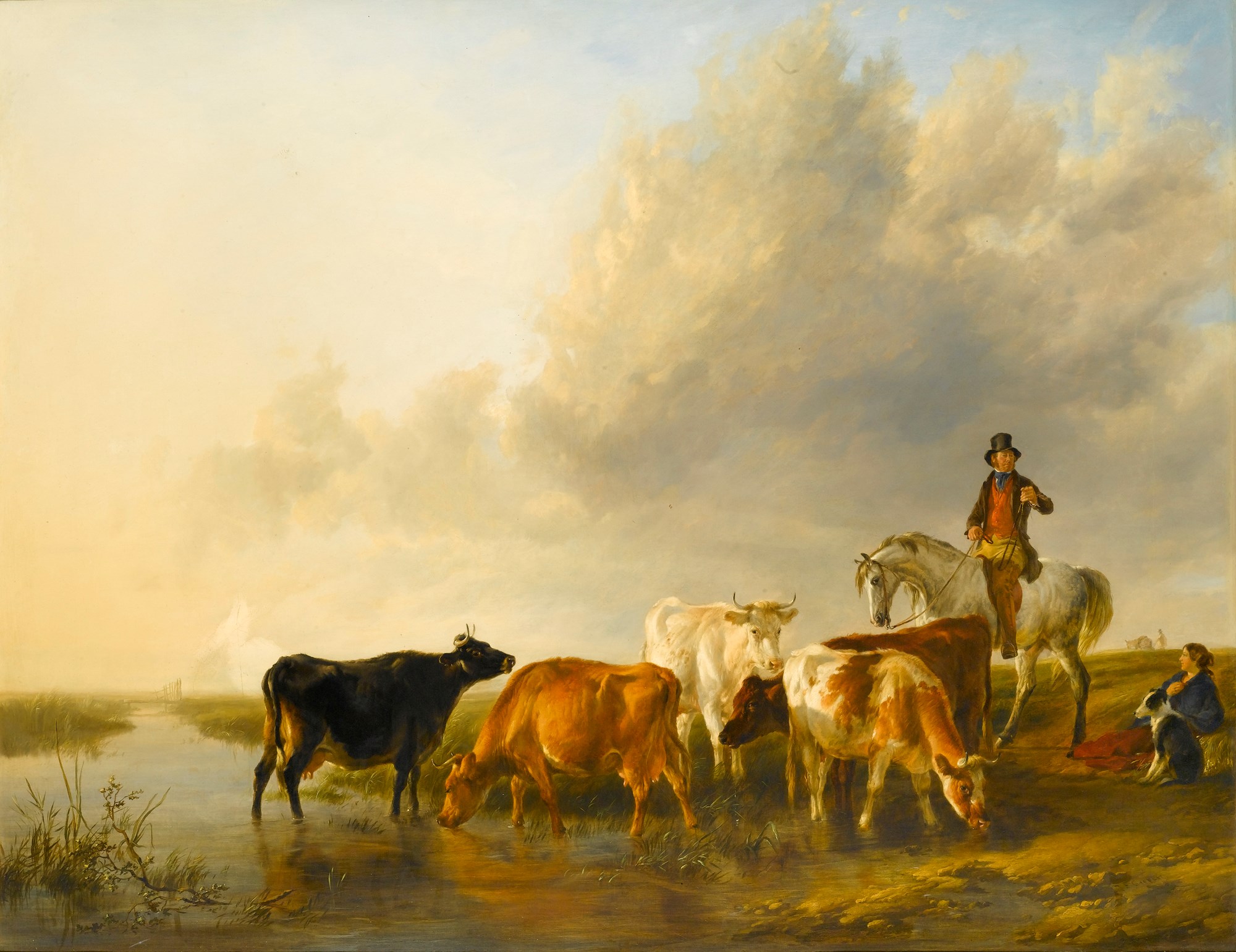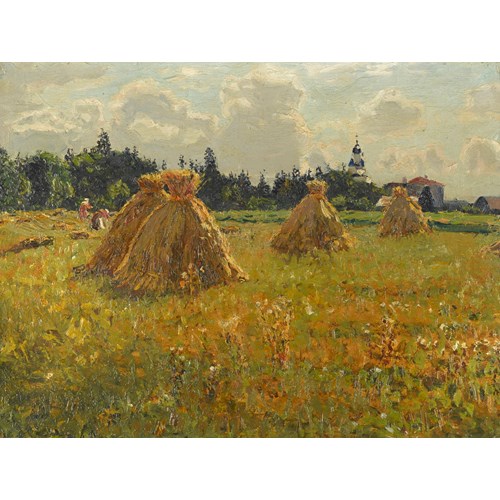Thomas Sidney Cooper
A Summer Evening
Period 1750-1850, 1850-1900, 19th century
Origin England
Medium Oil on canvas
Dimension 72.4 x 92.2 cm (28¹/₂ x 36¹/₄ inches)
As Kenneth Westwood has pointed out, Thomas Sidney Cooper repeats the motif of a mounted figure in a work of 1847, Drovers Halting, on their Way over the Mountains (Westwood, O.1847.2).¹ Westwood also clarifies that the present work is not to be confused with the 1845 work of the same title (O.1845.22), which was exhibited at the Royal Academy in 1846, as has been previously, erroneously, stated.²
A Summer Evening is a striking example of Thomas Sidney Cooper’s skill as a painter of cattle. Furthmore, Cooper's work references the influence of the seventeenth-century Dutch landscape painters Paulus Potter (1625-54) and Albert Cuyp (1620-91), who are known to have greatly inspired his work. Known as the English ‘Paul Potter’, Cooper was impressed by the Dutch master of the pastoral landscape. Throughout the seventeenth century the motif of the animal piece had become increasingly important and Potter was among the most influential of the Dutch artists in developing this genre. Potter, like Cooper, was particularly well known for his representations of cattle and had been revolutionary in his successful utilisation of animals alone as the primary focal subject, seen for example Four Bulls (Galleria Sabauda, Turin).
The influence of the work of Cuyp on Cooper can be appreciated in Cuyp’s Young Herdsman and Cows. Indeed, there are direct connections in the palette used, whilst the presence of a still river bank contributes to the impression of pastoral tranquillity. Furthermore, Cooper seems to appropriate elements of Cuyp’s compositional structure by creating a vast sense of space by silhouetting the cattle against the sky.
Cooper was born in Kent, in 1803, and having shown great artistic promise as a child he enrolled as a student at the Royal Academy in 1824. In the early years he gave art lessons to private individuals in order to maintain a living and in 1827 was given a formal post as an art teacher in Brussels. Although he lived in Brussels for just four years, this period shaped Cooper’s style tremendously. His friendship with Eugène Verboeckhoven, the Belgian animal painter certainly inspired his choice of subject matter, as well as introducing him to the Dutch animaliers of the seventeenth century. The Victorian taste for works by these Dutch artists undoubtedly contributed to Cooper’s contemporary popularity. He returned to England in 1831 and built his reputation as one of the most distinguished Victorian painters of sheep and cattle. The majority of his works were exhibited at the Royal Academy; from 1833 to 1902 he exhibited 266 works there without a break, and he remains the longest continuous exhibitor in the Academy’s history. Cooper was elected ARA in 1845 and RA in 1867.
We are grateful to Kenneth Westwood for his expertise.
¹ Westwood, K.J., Thomas Sidney Cooper C.V.O., R.A.: His Life and Work, (David Leathers Publishing, Somerset, 2011), vol. 1, p.235.
² Ibid.
Period: 1750-1850, 1850-1900, 19th century
Origin: England
Medium: Oil on canvas
Signature: Signed ‘T. S. Cooper’ (lower right)
Dimension: 72.4 x 92.2 cm (28¹/₂ x 36¹/₄ inches)
Provenance: Anonymous sale; Phillips, 13 December, 1976, lot 78 (where recorded as being dated 1846);
with Richard Green, London.
Literature: Kenneth J. Westwood, Thomas Sidney Cooper C.V.O., R.A.: His Life and Work, (David Leathers Publishing, Somerset, 2011), vol.1, p.235, no. O.1846.4, & vol.2, p.120, plate 94.
More artworks from the Gallery









